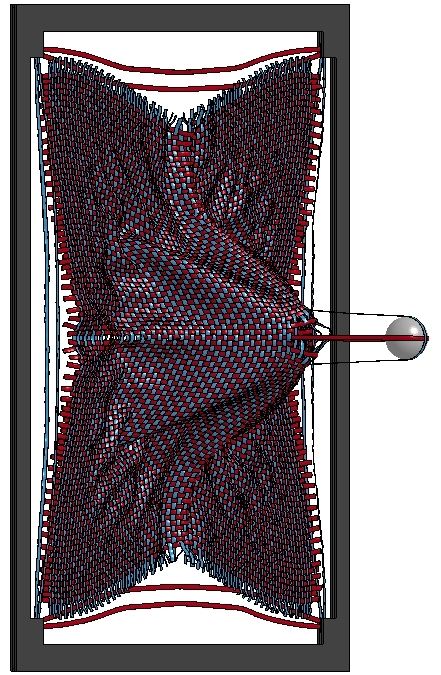High-modulus and high-strength glass (E.g. S2-glass) and polymeric materials such as aramids (E.g. Kevlar) are used in armor applications in the form of woven fabrics and unidirectional laminates to offer protection against incident high kinetic energy threats. Modeling the impact behavior of woven aramid fabrics is challenging because of their multi-scale structure spanning the nanometer (fibril) to micron (fiber) to millimeter (yarn) to centimeter (fabric) to meter (structure) length scales. Optimizing the impact performance of these fabrics requires an understanding of the interactions and mechanisms of deformation and energy dissipation across the length scale spectrum. However computational expense rapidly grows with modeling at lower length scales and this presents a challenge of finding ways to balance computational requirements with model resolution and accuracy. One technique is to use multi-scale models that spatially vary the model resolution while maintaining impedance matched interfaces to ensure proper strain wave propagations. Another important modeling issue to consider is the probabilistic penetration behavior of woven fabrics due to several sources of statistical variability such as filament and yarn tensile strengths and inter-yarn friction. This probabilistic behavior has important implications in body armor applications where it is imperative for the structure to consistently defeat a given threat. Techniques are needed to map these experimentally characterized statistical sources of variability into the finite element model and develop a computational framework numerically predict the probabilistic fabric behavior. This has several advantages over destructive experimental impact testing such as being able to quantitatively relate the isolated and coupled effects of several sources of statistical variability to probabilistic performance, as well as being able to exclude experimental sources of error. The proposed multi-scale probabilistic computational approach would provide scientists with a robust tool to design new and hybrid weave architectures, materials, and interfaces to optimize the impact performance of armor while reducing their weight.
Ballistic Impact of a Corner-Point Clamped Woven Kevlar Fabric
